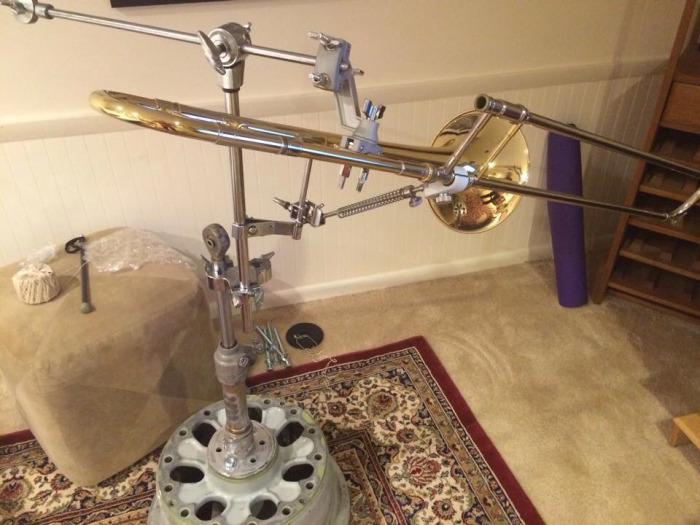Cold Weather "artistry"
So the cold and gloomy weather in Washington, DC got me thinking lately about some of the work I do outdoors with a trombone in my hand! I have had a number of questions over the years from people interested in how I deal with performing in less-than-ideal circumstances. For now, I will talk about cold weather, as I think that is, for me, the greatest weather related challenge I face. I define "less than ideal", for myself, as basically under 45 degrees Farhenheit, and outside with no heaters or weather protection. This might include sitting on a stage that's covered, but has no wind protection, or it might include rain or even snow. This also usually means doing this for greater than an hour or two. Think 8 hits outside in 40 degree weather, 10mph wind, and occasional spurts of playing.
Here's a list of essentials that I remember when I head out the door to play in cold weather:
1. Plastic Kelly mouthpiece - this thing is indispensable. I used to play a mouthpiece with a delrin rim, but in extreme cold, having the entire mouthpiece made from plastic is a huge improvement. It warms up very fast and stays warm longer. That's important, because endurance can be extremely reduced in the cold. For me, playing in the upper register becomes much more taxing, and the sound tends to thin out greatly on a cold metal mouthpiece.
2. Trombones slides start to freeze at about 25 degrees. At 15 degrees, they may freeze so solid that you are unable to move them at all! Ask me how I know! When forecasted, fill a small spray bottle with antifreeze and try not to use the F attachment valve!
3. Under Armor 4.0 long underwear. Expensive as hell, but it works great and fits tight so you can fit it under whatever clothing you are performing in.
4. Gloves... Boy, this is a hard one. I don't have gloves that are remotely effective at work for keeping my hands even moderately warm while holding a metal object in the cold, not to mention when it's raining! For trombonists, mittens combined with chemical hand warmers would be the way to go if you have the option. Once the hands get cold, it's all over. Let the pain begin!
Speaking of chemical warmers... I have found them to be very unreliable. They have to be fresh (expiration date) and they can't be in an enclosed space as they depend on air circulation to generate heat.
5. Be reasonable with your playing expectations. Expect to have less endurance, range, and facility and plan for it. If you are in charge of music selection, pick something that seems "easy" in a comfortable rehearsal setting. Go easy on the loud dynamics and use your "safe soft" piano dynamics as needed.
This is just a few of my best suggestions for dealing with the cold! Everyone has their own special sauce when it comes to layering, mouthpieces, and staying warm. If you can add to it, please leave some suggestions in the comments!
Stay warm,
The Virtual Trombonist

